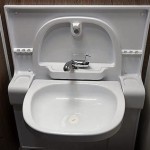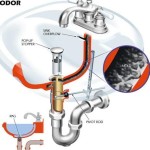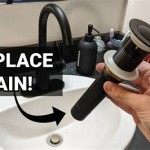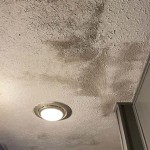How to Repair a Chip in a Bathroom Sink
A chipped bathroom sink can be an eyesore and a safety hazard. It can snag clothes, dull razor blades, and even harbor bacteria if not properly addressed. Fortunately, with the right materials and technique, you can repair a chip in your bathroom sink and restore its aesthetic appeal.
Assess the Damage
Before initiating any repair, it is crucial to thoroughly assess the chip. Determine the size and depth of the chip, as well as the material of the sink. Porcelain, ceramic, and acrylic sinks require different repair methods. Cracks in the sink may require professional attention.
For minor chips, consider the following:
- Size: Tiny chips may be easily filled with a sealant or epoxy. Larger chips may require more extensive work, such as using a resin mixture or a porcelain repair kit.
- Depth: Shallow chips can be addressed with a simple sealant. Deeper chips may necessitate a more substantial repair using epoxy or even a replacement piece.
- Material: The type of sink material will dictate the suitable repair method. Porcelain and ceramic sinks require specific products designed for their surfaces.
Repairing a Chip in a Bathroom Sink
Once the chip has been assessed, you can select the appropriate repair method. Here are several common approaches for repairing a chip in a bathroom sink:
1. Using a Porcelain Repair Kit
Porcelain repair kits are specifically designed for repairing chips and cracks in porcelain and ceramic sinks. They typically include a resin, a hardener, and a colorant that matches the sink's existing color.
Follow these steps to repair a chip using a porcelain repair kit:
- Clean the area: Thoroughly clean the chipped area with soap and water, ensuring it is free of dirt and debris. Dry the area completely.
- Mix the resin: According to the kit's instructions, mix the resin with the hardener. Allow the mixture to sit for a few minutes to allow the chemicals to react.
- Apply the resin: Using a small spatula or putty knife, apply a thin layer of resin to the chip. Spread the resin evenly and ensure it fills the entire chip.
- Allow the resin to cure: Let the resin cure for the time specified by the manufacturer. Avoid touching the resin while it cures.
- Sand the surface: Once the resin is cured, gently sand the repaired area to smooth out any imperfections and create a seamless finish.
- Apply colorant: If needed, apply the colorant provided in the kit to match the sink's original color. Allow the colorant to dry completely.
2. Using Epoxy
Epoxy provides a durable and long-lasting solution for repairing chips in bathroom sinks. It is available in a variety of colours and can be easily applied using a spatula or putty knife.
Follow these steps to repair a chip using epoxy:
- Prepare the area: Clean the chipped area thoroughly and dry it completely.
- Mix the epoxy: According to the epoxy's instructions, mix the resin with the hardener. Work quickly, as epoxy sets rapidly.
- Apply the epoxy: Spread the epoxy mixture over the chip, filling the entire area. Ensure the epoxy is smooth and level with the surrounding surface.
- Allow the epoxy to cure: Let the epoxy cure for the time specified by the manufacturer. Ensure the area is not disturbed during the curing process.
- Sand the surface: Once the epoxy has cured, gently sand the repaired area to create a smooth finish.
3. Using a Sealant
For shallow chips, a sealant can often provide a quick and simple repair. Silicone sealant is commonly used for this purpose. It is available in various colours and can be readily found at most hardware stores.
Follow these steps to repair a chip using a sealant:
- Clean the area: Clean the chipped area thoroughly with soap and water, ensuring it is free of dirt and debris. Dry the area completely.
- Apply the sealant: Apply a thin bead of sealant to the chip. Use a finger or a spatula to smooth the sealant and ensure it covers the entire chip.
- Allow the sealant to cure: Let the sealant cure according to the manufacturer's instructions. Avoid touching the sealant while it cures.
- Remove excess sealant: Once the sealant has cured, use a damp cloth to remove any excess sealant around the chip.
Important Considerations
When repairing a chip in a bathroom sink, it is crucial to consider the following factors:
- Safety Precautions: Ensure proper ventilation and wear protective gear, including gloves and a mask, when working with epoxy or sealant. These materials can contain fumes and chemicals that may be harmful if inhaled.
- Color Match: If using epoxy or sealant, choose a color that closely matches the sink's original color. This will help to minimize the appearance of the repair.
- Professional Help: If the chip is significant or involves cracks, it is advisable to seek professional assistance from a plumber or a specialist in sink repair.
By carefully assessing the damage and following the appropriate repair method, you can effectively repair a chip in your bathroom sink and restore its functionality and aesthetic appeal.

How To Patch A Porcelain Sink Himg Surface Repair

How To Fix A Chipped Sink

Sink Repair Happy Tubs Bathtub

Sink Repair Happy Tubs Bathtub

Magic 0 17 Oz Porcelain Chip Fix Repair For Tubs And Sinks 3007a The Home Depot

How To Fix A Ed Porcelain Sink 8 Steps Prudent Reviews

How To Fix A Chipped Sink

How To Repair And Prevent Large Chips In Porcelain Sinks Homes On Point

Thrifty Mum Gets Rid Of A Giant In Her Bathroom Sink Using Easy Repair Kit And Saves Herself Hundreds The Sun

Quick Fix For Chip In Porcelain Sink Airbnb Hosts Forum
Related Posts







